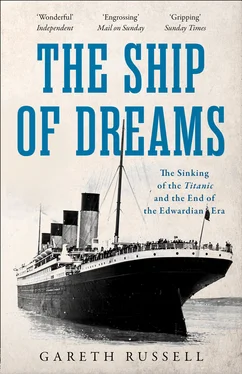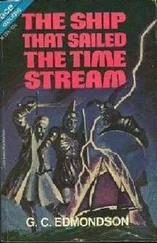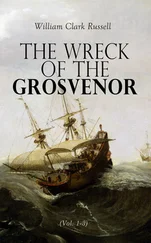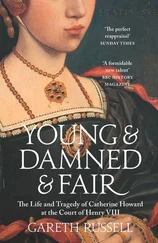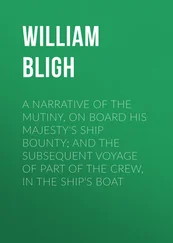Alien they seemed to be;
No mortal eye could see
The intimate welding of their later history,
Or sign that they were bent
By paths coincident
On being anon two halves of one august event,
Till the Spinner of the Years
Said ‘Now!’ And each one hears,
And consummation comes, and jars two hemispheres.
Thomas Hardy, The Convergence of the Twain
(Lines on the loss of the ‘Titanic’) (1912)
CONTENTS
Cover
Title Page THE SHIP OF DREAMS The Sinking of the Titanic and the End of the Edwardian Era Gareth Russell
Copyright
Praise
Dedication
Epigraph
Dramatis Personae
Author’s Note
1. The Lords Act
2. The Sash My Father Wore
3. Southampton
4. A Contest of Sea Giants
5. A Safe Harbour for Ships
6. The Lucky Holdup
7. A Decent Wee Man
8. A Kind of Hieroglyphic World
9. Its Own Appointed Limits Keep
10. Two More Boilers
11. A Thousand Uneasy Sparks of Light
12. Going Up to See the Fun
13. Music in the First-Class Lounge
14. Vox faucibus haesit
15. Be British
16. Over the Top Together
17. The Awful Spectacle
18. Grip Fast
19. Where’s Daddy?
20. Extend Heartfelt Sympathy to All
21. The Spinner of the Years
Picture Section
Footnotes
Notes
Glossary
Bibliography
Index
Acknowledgements
About the Author
By the Same Author
About the Publisher
DRAMATIS PERSONAE
THE COUNTESS OF ROTHES
LUCY-NOËLLE-MARTHA LESLIE, Countess of Rothes
NORMAN LESLIE, 19TH EARL OF ROTHES, her husband
MALCOLM, VISCOUNT LESLIE, their eldest son, later 20th Earl of Rothes
THE HONOURABLE JOHN LESLIE, their youngest son
GLADYS CHERRY, the Earl’s cousin and the Countess’s travelling companion
CLEMENTINA and THOMAS DYER-EDWARDES, the Countess’s parents
ROBERTA (‘CISSY’) MAIONI, the Countess’s lady’s maid
THOMAS ANDREWS, Managing Director of the Harland and Wolff shipyard
HELEN ANDREWS, his wife
ELIZABETH ANDREWS, their daughter
WILLIAM, 1ST LORD PIRRIE, Thomas’s uncle, Chairman of Harland and Wolff
IDA STRAUS, a philanthropist
ISIDOR STRAUS, Ida’s husband, a former congressman for New York and co-owner of Macy’s department store
ELLEN BIRD, Ida’s lady’s maid
JOHN FARTHING, Isidor’s valet
| JESSE STRAUS CLARENCE STRAUS PERCY STRAUS SARA HESS MINNIE WEIL HERBERT STRAUS VIVIAN SCHEFTEL |
 |
Ida and Isidor’s children |
JOHN BORLAND THAYER, Second Vice-President of the Pennsylvania Railroad
MARIAN THAYER, his wife
JOHN BORLAND THAYER III (‘JACK’), their eldest child
MARGARET FLEMING, Marian’s lady’s maid
| FREDERICK THAYER MARGARET THAYER (LATER TALBOTT) PAULINE THAYER (LATER DOLAN) |
 |
The Thayers’ younger children |
DOROTHY GIBSON, an actress
PAULINE GIBSON, her mother
GEORGE BATTIER, Dorothy’s husband
JULES BRULATOUR, a movie producer and Dorothy’s lover
LEONARD GIBSON, Dorothy’s stepfather
OTHER RELEVANT PASSENGERS
RHODA ABBOTT, a Salvation Army officer, travelling in Third Class
MADELEINE and COLONEL JOHN JACOB ASTOR IV
ALGERNON BARKWORTH, a landowner from Yorkshire
LAWRENCE BEESLEY, a science teacher, travelling in Second Class, subsequently author of The Loss of the S.S. Titanic
MAJOR ARCHIBALD BUTT, Military Aide to President William Howard Taft
CHARLOTTE DRAKE CARDEZA, a socialite from Pennsylvania
ELEANOR CASSEBEER, returning home to New York
LUCY, LADY DUFF GORDON, a fashion designer
ELIZABETH EUSTIS and MARTHA STEPHENSON, sisters and neighbours of the Thayers
COLONEL ARCHIBALD GRACIE IV, an historian and friend of the Strauses
J. BRUCE ISMAY, Managing Director of the White Star Line
FRANCIS (‘FRANK’) MILLET, a painter, author and sculptor
ALFRED NOURNEY, a car salesman travelling under the pseudonym of a German baron
EMILY and ARTHUR RYERSON, friends of the Thayers, returning home after their son’s death
FREDERIC SEWARD, a New York-based lawyer and a bridge partner of Dorothy Gibson
WILLIAM SLOPER, an American stockbroker, who also played bridge with Dorothy Gibson
ELEANOR and GEORGE WIDENER, prominent members of Philadelphia Society and friends of the Thayers
RELEVANT MEMBERS OF THE CREW
HAROLD BRIDE, the Titanic ’s Junior Wireless Operator
HARRY ETCHES, a steward in First Class
VIOLET JESSOP, a stewardess in First Class
THOMAS JONES, Able Seaman, put in charge of Lifeboat 8
MARY SLOAN, a stewardess in First Class
ANNIE ROBINSON, a stewardess in First Class
CAPTAIN EDWARD J. SMITH, Commander of the Titanic
CAPTAIN ARTHUR ROSTRON, Commander of the Carpathia
DR FRANCIS (‘FRANK’) MCGEE, the Carpathia ’s Surgeon
DR WILLIAM O’LOUGHLIN, the Titanic ’s Surgeon
HENRY WILDE, the Titanic ’s Chief Officer
WILLIAM MURDOCH, the Titanic ’s First Officer
CHARLES LIGHTOLLER, the Titanic ’s Second Officer
HERBERT PITMAN, the Titanic ’s Third Officer
JOSEPH BOXHALL, the Titanic ’s Fourth Officer
HAROLD LOWE, the Titanic ’s Fifth Officer
JAMES MOODY, the Titanic ’s Sixth Officer
On Sunday 14 April 1912, at about 11.40 p.m., the Titanic , an ocean liner operated by a British shipping company with American owners, struck an iceberg. Two hours and forty minutes later, she sank with a loss of life that was variably estimated at 1,502, 1,503, 1,512, 1,517 and 1,522 but which has recently been established at 1,496.[1] A total of 712 survivors in lifeboats were rescued by another British ship, the Carpathia , between two and six hours after the Titanic disappeared. Two inquiries were held, in each of her homelands, and they reached broadly similar conclusions about what had been done in the past and should be done in the future. In 1985, the wreck of the Titanic was discovered 2½ miles under by an expedition led by American oceanographer Robert Ballard.[2]
These are the bare facts surrounding a ship that is, arguably, the most famous vessel in history. When compared to nearly any other contender for that epithet, the Titanic ’s popular appeal outstrips that of Cleopatra’s barge, the Mayflower , the Lusitania and perhaps even Noah’s Ark. Her name has become a synonym for catastrophe. The story of the largest and most luxurious ship ever built, racing across the Atlantic Ocean in an attempt to break the record for that journey, ignoring numerous ice warnings and then sinking with the loss of thousands, is an entrenched narrative, the belittling of which is surprisingly easy, if one is so inclined. Had she survived her first voyage, the Titanic would have dated like other ocean liners. While she was the largest man-made moving object when she eased off from her Southampton pier in 1912, she would only have held that accolade for the next thirteen months, until the arrival of a German passenger liner with room for a thousand more passengers amid 6,000 more tons.[3] Some of the Titanic ’s second-class passengers preferred the accommodation on the Mauretania .[4] Before she sank, the Titanic was eclipsed in fame by her elder and slightly smaller sister ship, the Olympic , which had captured the attention of the world’s press when she set sail a year earlier.[5] Her passenger quarters, while splendid in many places, were soon surpassed – the march of comfort on the sea lanes did not halt in the spring of 1912.
Читать дальше
